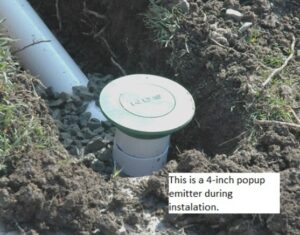In an era where sustainability is more important than ever, industries are seeking innovative materials that offer both resilience and eco-friendliness. Flexiglass, a groundbreaking material that combines strength, flexibility, and environmental responsibility, is emerging as a key player in this movement. This article explores the sustainability of Flexiglass, highlighting its eco-friendly properties, production processes, and its potential to revolutionize various industries.
The Rise of Sustainable Materials
As global awareness of environmental issues grows, the demand for sustainable materials is on the rise. Traditional materials like glass and plastic, while functional, often come with significant environmental costs, including energy-intensive production and long decomposition times. Flexiglass offers a sustainable alternative, combining the best qualities of glass and plastic while minimizing their environmental impact.
What Makes Flexiglass Eco-Friendly?
- Recyclability
One of the primary factors contributing to the sustainability of Flexiglass is its recyclability. Unlike traditional glass, which can be difficult to recycle due to its brittleness and the potential for contamination, Flexiglass can be easily recycled and repurposed. This reduces waste and conserves resources, making it an environmentally friendly choice for a wide range of applications.
- Energy-Efficient Production
Flexiglass production is generally more energy-efficient than that of traditional glass. The process of creating Flexiglass involves lower temperatures and less energy consumption, resulting in a smaller carbon footprint. Additionally, advancements in manufacturing technology are further reducing the energy requirements for producing Flexiglass, making it an even more sustainable option.
- Durability and Longevity
Flexiglass’s durability is another key factor in its sustainability. The material’s resilience means that products made from Flexiglass have a longer lifespan than those made from traditional glass or plastic. This durability reduces the need for frequent replacements, thereby minimizing waste and conserving resources. In industries where longevity is crucial, such as construction and automotive, Flexiglass offers a sustainable solution that doesn’t compromise on performance.
- Reduced Material Use
Because Flexiglass is both strong and flexible, it can often be used in thinner layers than traditional glass, reducing the overall amount of material needed for a given application. This not only conserves resources but also reduces the weight of the final product, which can lead to additional environmental benefits, such as lower transportation emissions.
Eco-Friendly Applications of Flexiglass
- Green Building and Architecture
In the construction industry, Flexiglass is being embraced for its eco-friendly properties. Its lightweight nature and flexibility make it ideal for modern, energy-efficient buildings. Architects are using Flexiglass to create structures that require fewer resources to build and maintain, while also providing superior insulation and durability. This aligns with the principles of green building, where sustainability and energy efficiency are top priorities.
- Sustainable Automotive Design
The automotive industry is another sector where Flexiglass’s sustainability shines. Flexiglass is being used to create lighter, more fuel-efficient vehicles, contributing to the reduction of greenhouse gas emissions. Its durability also means that automotive parts made from Flexiglass have a longer lifespan, reducing the need for replacements and the associated environmental costs.
- Eco-Conscious Consumer Electronics
In consumer electronics, Flexiglass is providing an eco-friendly alternative to traditional glass and plastic components. Manufacturers are increasingly turning to Flexiglass for screens, protective cases, and other components due to its recyclability and lower environmental impact. As consumers become more environmentally conscious, the demand for sustainable electronics is expected to grow, further driving the adoption of Flexiglass.
The Future of Flexiglass in Sustainable Development
As the world continues to prioritize sustainability, the role of Flexiglass in various industries is likely to expand. Ongoing research and development are focused on enhancing the eco-friendly properties of Flexiglass, such as improving its recyclability and reducing its production impact even further. Innovations in this field could lead to the widespread adoption of Flexiglass as a go-to material for sustainable design and manufacturing.
Challenges and Opportunities
While Flexiglass offers numerous sustainability benefits, there are challenges to overcome. For example, the initial cost of Flexiglass can be higher than that of traditional materials, which may deter some businesses from adopting it. However, as production processes become more efficient and economies of scale are realized, the cost of Flexiglass is expected to decrease, making it more accessible to a broader range of industries.
On the other hand, the opportunities for Flexiglass are vast. With the growing emphasis on sustainability in both public policy and consumer behavior, there is significant potential for Flexiglass to become a key material in the global push towards a more sustainable future.
Conclusion
Flexiglass represents a significant step forward in the quest for sustainable materials. Its combination of recyclability, energy-efficient production, durability, and reduced material use makes it an eco-friendly alternative to traditional glass and plastic. As industries continue to seek out innovative solutions that align with environmental goals, Flexiglass is poised to play a crucial role in shaping a more sustainable future.





More Stories
How to Use TopFollow APK to Grow Your Followers Naturally? A Simple Guide for Beginners
What Are the Best Omegle Replacements? A Friendly Guide to Chat Random Text Safely and Easily
Where’s the Best Place to Buy Backlinks in 2025? A Friendly Guide with Marketing 1 on 1 Tips